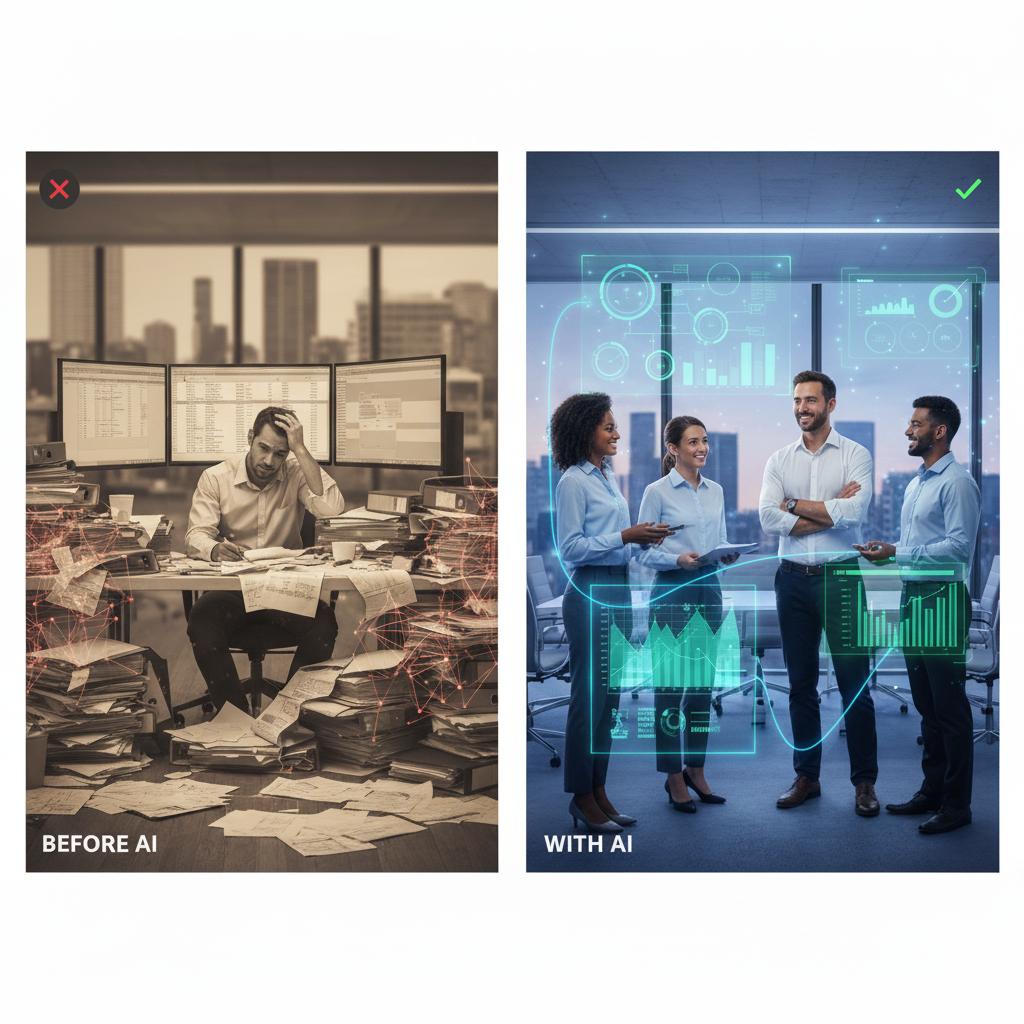Students Already Use AI. Now Make It Visible.
How transparency raises standards, reduces disputes, and prepares students for professional work.
3 min read
 Christina Marchetti
:
Sep 5, 2025 4:08:23 PM
Christina Marchetti
:
Sep 5, 2025 4:08:23 PM

Table of Contents
While America debates job displacement, countries like Britain and Sweden are capitalizing on AI by retraining workers instead of replacing them. Britain generated £3.6 billion in new revenue over 24 months, proving the real opportunity isn't choosing between humans and machines, it's building human-AI partnerships at scale. With 44% of executives unable to find AI talent and only 27% investing in training, America has an 18-month window to lead through workforce development, not just innovation.
During my years as a strategy + innovation consultant, I've watched Fortune 500 companies flip from "human + AI collaboration" to "AI replacement" mode. But here's what I keep seeing: America creates the AI breakthroughs, other countries figure out how to turn them into massive economic opportunity.
The talent math is incredible:
This isn't a crisis. This is the biggest skill-building opportunity since the internet went mainstream.
They partnered with Amazon, Google, Microsoft, and Nvidia to retrain 7.5 million workers. The results in just two years:
Here's the part most people miss: they didn't just teach Python. They created environments where accountants learned to spot financial patterns, marketers became prompt engineers, and factory workers mastered predictive maintenance.
With 150+ partners delivering structured AI education, they've proven that inclusive workforce development creates both innovation and economic growth at scale.
Every month we spend debating, other countries are building partnerships, launching training programs, and developing workforce capabilities. But here's our massive advantage: we still lead in AI research AND have the world's most dynamic economy.
Combine coordinated workforce development with that foundation? We don't just compete - we set the global standard.
I've seen too many organizations over-rotate on technology while forgetting the human transformation piece. Here's what works:
Here is how we can make that happen:
Picture a marketing manager who can analyze customer sentiment in real-time, or an accountant who spots financial patterns that humans miss entirely. In five years, American workers at every level have AI skills that amplify their expertise.
Our companies don't outsource AI development - they export AI solutions. We don't just import talent - we develop it at scale and attract the best from everywhere.
We become the economy others study, not the market others serve.
I've been in this space long enough to see the patterns. The countries that invest in human-AI partnerships now will shape the next economy.
Pick one initiative this quarter:
In 18 months, we'll either be the country that figured out how to scale human potential with AI, or we'll be the market buying AI solutions built by workforces we chose not to train.
Because here's what other countries figured out early: The AI revolution isn't about replacing humans. It's about empowering them through smart partnerships between human insight and AI capability.
What's your take? If you could fast-track one initiative - education partnerships, immigration reform, or corporate reskilling programs - which would create the biggest impact fastest?
The AI talent gold rush is happening. The question is whether we'll mine it or watch others get rich from it.
#AITalent #FutureOfWork #TechLeadership #WorkforceDevelopment #Human+AIInnovation
Add your email below and we'll send you newsletters and blog updates from the RightSeat AI TrustLab

How transparency raises standards, reduces disputes, and prepares students for professional work.

Part 2: AI for Strategic Planning

AI for Strategic Planning, Part 1